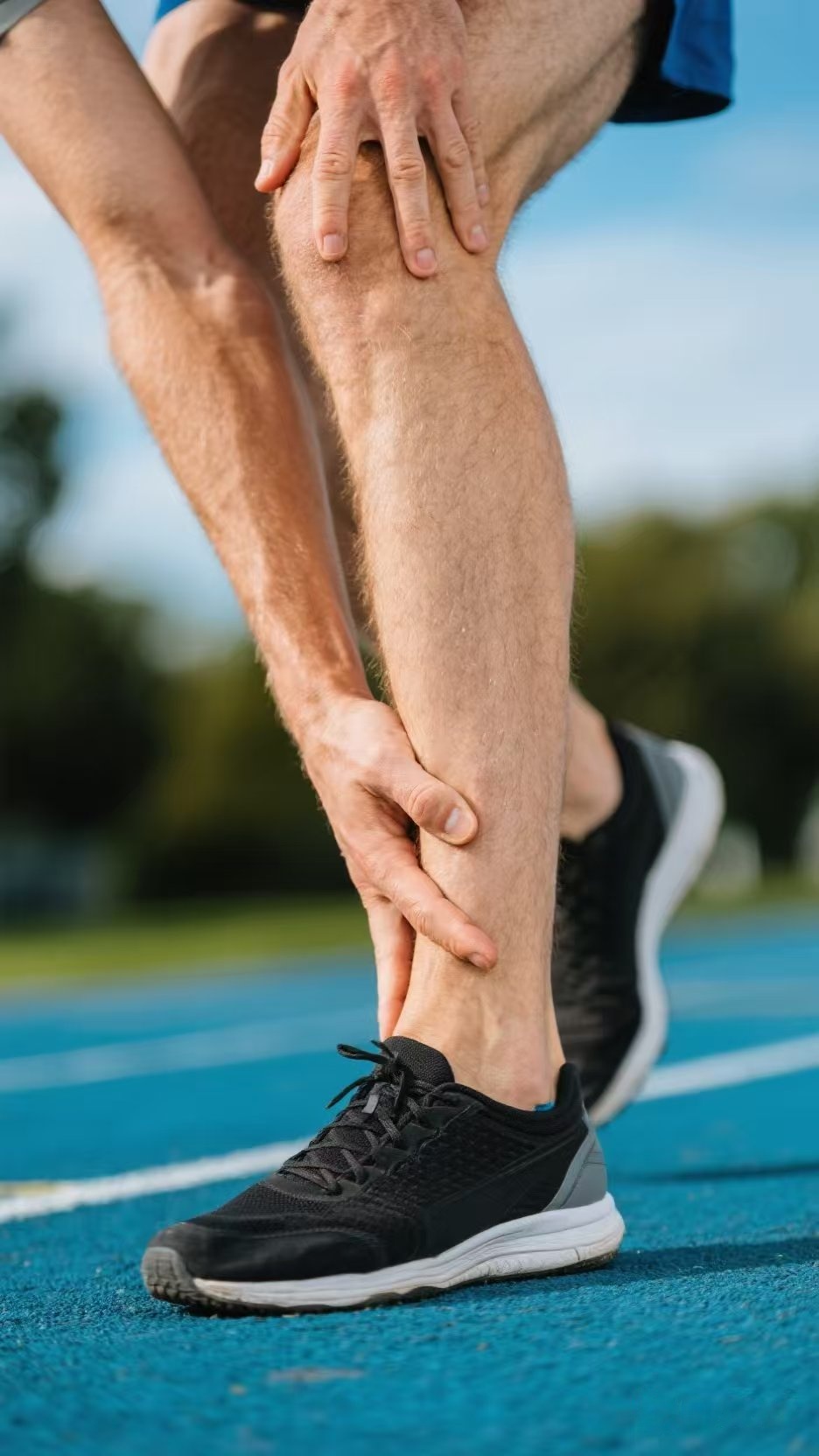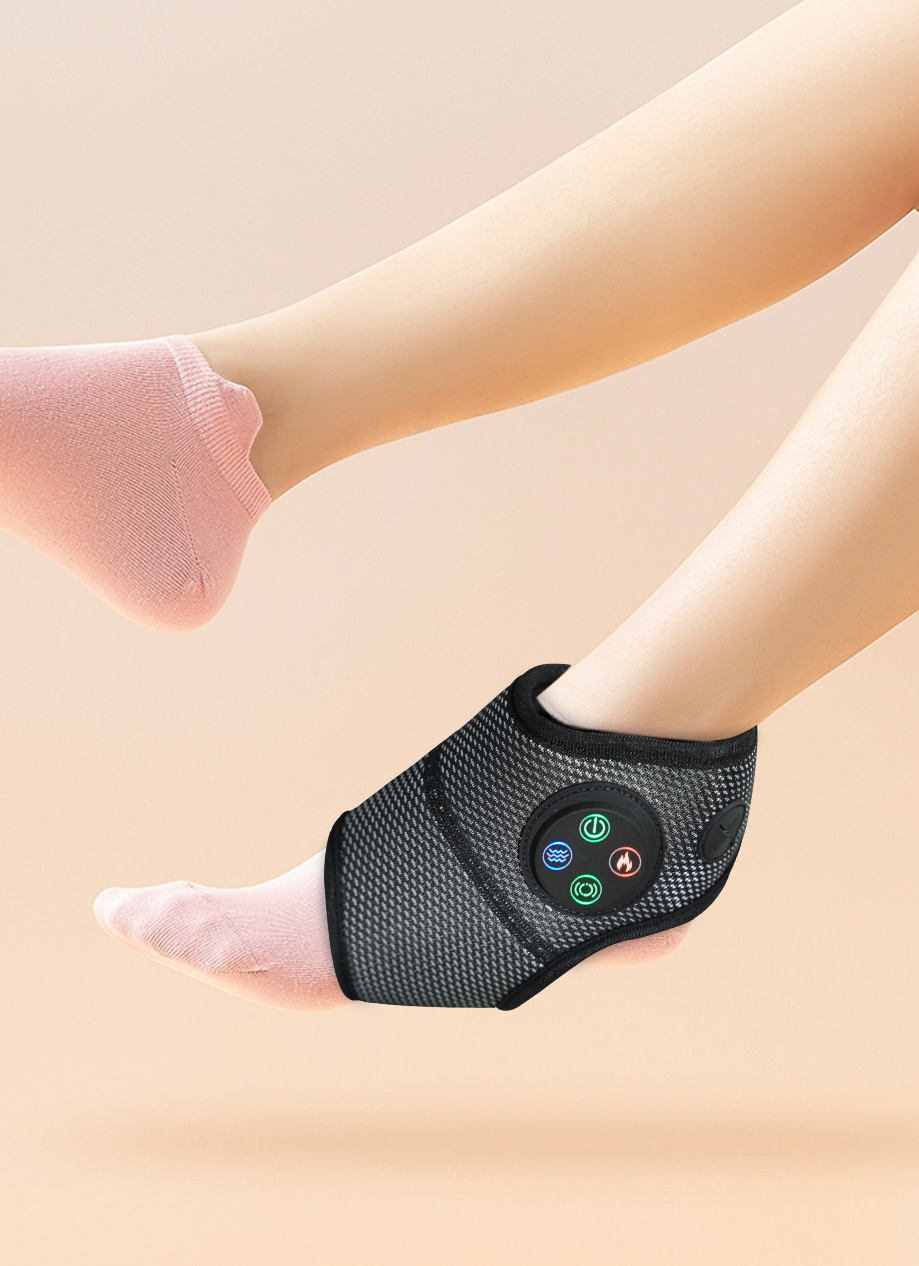Ankle Swelled After Massage? 5 Steps for Pros
- By Grace
- Updated on
You’ve just enjoyed a relaxing massage, perhaps targeting tired legs or a stressed back. But then, a new challenge emerges: your ankle swelled after the massage. It can be quite disconcerting, can't it? Many of us, especially busy professionals balancing demanding schedules, tend to chase symptoms rather than understanding the whole picture of our well-being. This article aims to shift that perspective, moving beyond just reacting to the swelling, and instead, embracing a comprehensive, personalized approach to your post-massage comfort.
As a Health Coach, I believe understanding the nuances of your body’s responses is key to sustainable wellness. While an ankle massager might seem like the immediate answer, the real power lies in decoding *why* your ankle might be swelling and then applying targeted strategies. We’ll explore the various reasons this seemingly counterintuitive reaction can occur, providing you with actionable insights to manage and even prevent future occurrences, fostering a deeper connection with your body's signals and ultimately helping you confidently achieve your unique health goals.
Decoding Post-Massage Ankle Swelling: What Professionals Need to Know
So, you had a massage, and your ankle swelled. Is this normal? Is it serious? The truth is, there isn't a single, straightforward answer, which can be frustrating when you're looking for quick solutions. Actually, post-massage swelling can stem from a few different physiological pathways, each requiring a distinct understanding. Have you ever considered how deeply interconnected your body’s systems truly are, and how even therapeutic touch can elicit a complex response?
One common reason, and often a misunderstood one, is that your lymphatic system may be overworking. Massage, especially deep tissue or vigorous techniques, profoundly stimulates circulation and the removal of waste products and excess fluid from tissues. Sometimes, this sudden influx of fluid and metabolic byproducts can temporarily overwhelm the lymphatic system's capacity, leading to localized swelling. It’s like a bustling city suddenly having to manage an unexpected rush of traffic – things might slow down a bit before they clear up, resulting in transient swelling in the ankle area.
However, another perspective suggests that it may indicate a potential circulatory problem. While less common immediately following a massage, if there's an underlying venous insufficiency, peripheral artery disease, or even a predisposition to deep vein thrombosis (DVT), the increased pressure or manipulation during a massage could subtly exacerbate existing fluid pooling or poor circulation. This isn't to alarm you, but rather to highlight the importance of being attuned to your body's persistent signals, especially if the swelling doesn't subside, is asymmetrical, or is accompanied by other symptoms like pain, warmth, redness, or skin discoloration.
Finally, for some individuals, ankle swelling can simply be a normal temporary reaction. Our bodies respond uniquely to various stimuli based on our individual physiology. Factors like hydration levels before and after the massage, recent activity, certain medications, and even the specific pressure and technique used by the masseuse can influence how your tissues react. Sometimes, the body's natural inflammatory response to muscle manipulation, especially in areas like the ankle that bear significant load, can manifest as mild, transient swelling. This is simply your body's way of saying, "I'm working on repair and adaptation!" and is typically not a cause for concering.

How to Manage Your Ankle Swelling for Post-Massage Recovery
Navigating post-massage swelling requires a proactive, personalized approach. It's not about quick fixes but about understanding and supporting your body's natural healing processes. From my experience as a Health Coach, I've found that integrating self-care with informed action yields the best results. Let's dive into some key strategies, truly the pillars of personalized health management for addressing ankle swelling effectively, ensuring you get back to your professional stride comfortably.
Pillar 1: Optimizing Lymphatic Flow with Gentle Support
When the lymphatic system is trying to catch up after being stimulated, aiding its natural flow can significantly reduce swelling and improve comfort. This doesn't require aggressive intervention; rather, gentle and consistent support. Consider using a soft, low-intensity ankle massager designed for lymphatic drainage, or simply your own hands with light, upward strokes towards the heart. This encourages fluid movement away from the swollen area and back into the main circulation.
- Elevation: Lie down and elevate your ankle above your heart for 15-20 minutes, two to three times a day. Using pillows to comfortably prop up your leg helps gravity work in your favor, assisting fluids to drain away from the ankle.
- Gentle Movement: Perform gentle ankle rotations (clockwise and counter-clockwise) and flexions (pointing toes up and down). This acts as a natural "pump," using muscle contraction to encourage the movement of trapped fluid out of the swollen area. Aim for 10-15 repetitions per direction, several times daily.
- Compression for Swelling: A light compression for swelling bandage or socks, like a low-grade ankle compression brace, can provide gentle, consistent pressure. This helps to prevent further fluid accumulation and encourages existing fluid to disperse. Crucially, ensure it’s not too tight, as excessive pressure could restrict healthy circulation.
- Hydration: Believe it or not, adequate water intake is paramount. Staying well-hydrated helps your body maintain fluid balance and efficiently process and eliminate metabolic waste, directly supporting optimal lymphatic function and overall tissue health.

Pillar 2: Addressing Underlying Circulatory Concerns
While less common as a direct consequence, if the swelling is persistent, painful, discolored, or accompanied by unusual warmth, it’s imperative to consider underlying circulatory issues that might have been exacerbated. A massage won't *cause* a serious condition like a DVT, for example, but it might unwittingly highlight an existing, undiagnosed vulnerability in your circulatory system. You might be surprised to find out how many subtle signs our bodies give us when something is truly amiss.
- Consult a Professional Immediately: If you suspect a serious circulatory issue (e.g., sudden, severe pain, warmth, redness, or asymmetry in swelling between ankles), seek medical attention without delay. A doctor can perform diagnostics to rule out or diagnose serious conditions and provide appropriate treatment.
- Thorough Symptom Monitoring: Keep a detailed log of your symptoms. Note precisely when the swelling started, its progression, any associated pain levels (on a scale of 1-10), and accompanying symptoms like fever, skin changes, or breathing difficulties. This comprehensive information is invaluable for a medical diagnosis.
- Understanding Leg Circulation Machines: While a leg circulation machine can be a beneficial tool for general circulation improvement and promoting blood flow in healthy individuals, it's crucial not to use one directly on an acutely swollen or painful ankle without professional medical advice, especially if a DVT or other serious condition is a possibility. These devices are for prevention and general wellness support, not acute treatment of potentially serious issues.
Pillar 3: Embracing Normal Reactions & Self-Care
Sometimes, the swelling is simply your body's natural inflammatory response working its magic after manipulation. It’s important to give your body the space and tools to recover and adapt to the therapeutic changes initiated by the massage. This is where holistic self-care truly shines, and understanding what's "normal" can alleviate unnecessary anxiety, preventing you from overreacting to a benign process. To be honest, it's often about trust in your body's innate healing capacity.
- R.I.C.E. Method: This classic acronym stands for Rest, Ice, Compression (light), and Elevation. It’s an incredibly effective approach for acute inflammation and swelling. Apply ice packs (wrapped in a cloth) for 15-20 minutes, allowing a break of at least 20 minutes between applications, several times throughout the day.
- Listen to Your Body: Avoid any activities that aggravate the swelling or cause increased pain. Give your ankle a proper break from strenuous activities. Pushing through discomfort can prolong recovery and potentially worsen the swelling.
- Gentle Walking: Once the initial discomfort and acute swelling subside, very gentle walking can actually be beneficial. The rhythmic contraction of leg muscles during walking assists venous return and lymphatic drainage, effectively "pumping" fluid out of the ankle area. Start with short durations and gradually increase as comfort allows.
- Balanced Anti-Inflammatory Diet: Incorporate anti-inflammatory foods into your daily diet. Focus on leafy greens, colorful berries, fatty fish rich in omega-3s, and whole grains. These foods provide essential nutrients that support your body's natural healing processes and reduce systemic inflammation, aiding faster recovery.
3 Essential Ankle Swelling Tactics for Post-Massage Recovery
Crafting your unique health roadmap isn't about following rigid rules; it's about building self-awareness and choosing strategies that resonate with your body's unique needs and lifestyle. As a busy professional, you need practical, actionable steps that seamlessly fit into your life without adding undue stress. So, how do we confidently achieve your unique health goals when it comes to something like persistant ankle swelling after a massage? Here are three essential tactics to integrate into your personalized wellness journey for lasting comfort and peace of mind.
- Symptom Tracking & Contextual Awareness: Don't just react; observe. Keep a simple journal or use a health app to note when ankle swelling occurs, its severity (mild, moderate, severe), what you were doing immediately before the massage, the specific type of massage received, and critically, how long the swelling lasts. This meticulous data provides invaluable insights. Is it always after a deep tissue massage? Does it only happen when you're dehydrated? Recognizing patterns is the first and most powerful step in understanding your body's responses and preventing future occurrences.
- Informed Product Use & Smart Choices: If you're considering incorporating tools like an ankle massager or an ankle compression brace into your routine, research products thoroughly. An ankle massager can be a great tool for daily relaxation and improving circulation *when no acute swelling or injury is present*, providing a soothing effect. An ankle compression brace can offer supportive, gentle compression for mild, ongoing swelling. Always prioritize comfort and listen to your body – if a product causes discomfort, stop using it immediately. Remember, general wellness tools like a leg circulation machine are for maintaining health, not a substitute for medical diagnosis or treatment of acute issues.
- Proactive Communication with Health Professionals: Never hesitate to consult your massage therapist about the swelling; they might adjust their technique or pressure points in future sessions. More importantly, establish a relationship with a trusted healthcare provider who can offer personalized guidance. If the swelling is persistent (beyond 48 hours), painful, severely discolored, asymmetrical, or accompanied by fever, it's a significant "red flag" and requires immediate medical attention. Your health is an investment, not an expense; proactive care empowers you.
Based on my experience, the journey to holistic wellness is a continuous process of learning, observing, and adapting. By understanding the potential causes of your post-massage ankle swelling and equipping yourself with these practical strategies, you can confidently navigate your health landscape. Embrace this personalized approach to not only manage discomfort but to truly optimize your well-being and maintain peak performance in your professional and personal life. We encourage you to share your experiences and insights in the comments below – your journey can inspire others!
This reply is generated based on currently verifiable public information. It is recommended to cross-check key content with authoritative sources.




